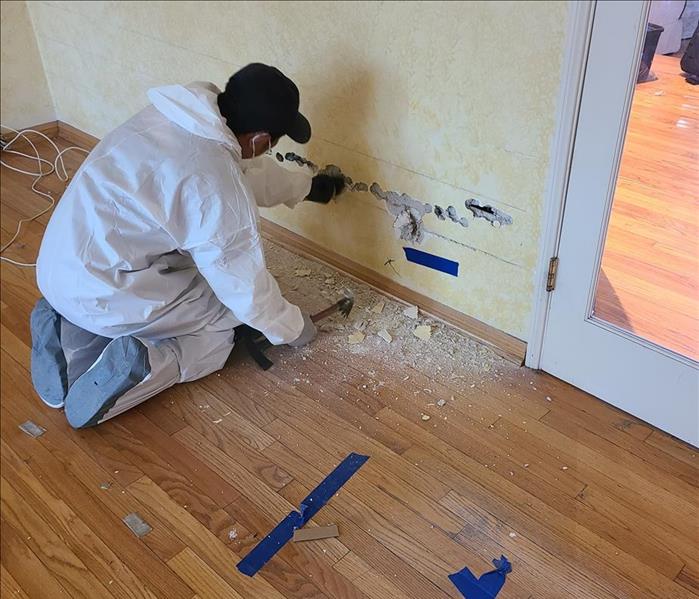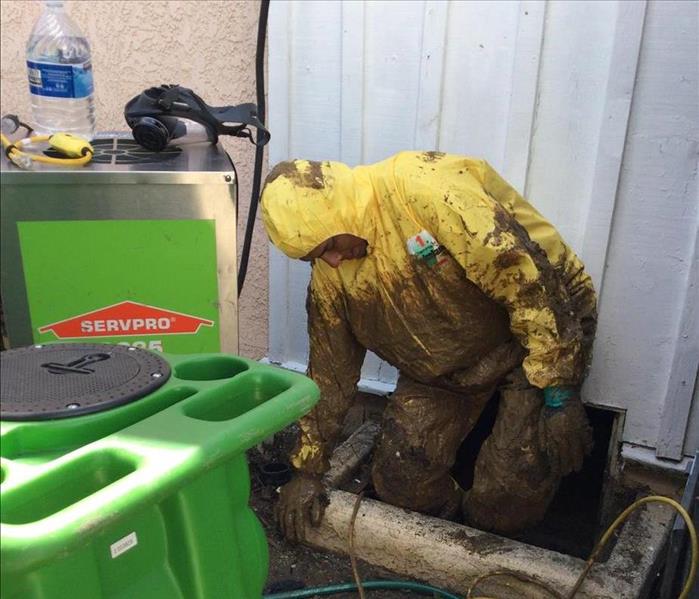Water Damage Photo Gallery

Water Remediation Process
Our technician is doing what is called a flood cut as part of the water remediation process. The purpose is to allow the removal of water-damaged drywall, and insulation in order to access the framing/studs for drying. We only do flood cuts on walls that do not show sufficient drying progress after 2-3 days or on walls that are contaminated.

Sewage Water Cleanup
In this photo, our technician is coming out of a crawlspace where we are doing a sewage water cleanup and restoration job. A broken drain line expelled sewage-laden water for several weeks in this crawlspace until the homeowners discovered it. In a nutshell, the process consists of extracting sewage-laden water with portable or truck-mounted extraction units. We then remove the top 2-3 inches of contaminated soil and bag it for special disposal. We then disinfect the area using a high-quality ulv fogger doing this several times. We then dry the affected area using desiccant dehumidifiers, negative air machines, and sometimes with a specialized heater. Lastly, we apply an absorbent to the areas of the soil that were affected which continues to absorb moisture and acts as a deodorizer. Should you have a crawlspace that has sewage or water damage, do not hesitate to call SERVPRO of Northridge and SERVPRO of Granada Hills at 818-993-9339.
Water Extraction Process
Water extraction is the process of removing all standing water and excess moisture from the property. It not only helps prevent more severe structural damage, but also speeds up the drying process and minimizes the risk of mold growth and secondary water damage. This is usually the first step on a water damage cleanup should standing water exist on floors.






 24/7 Emergency Service
24/7 Emergency Service